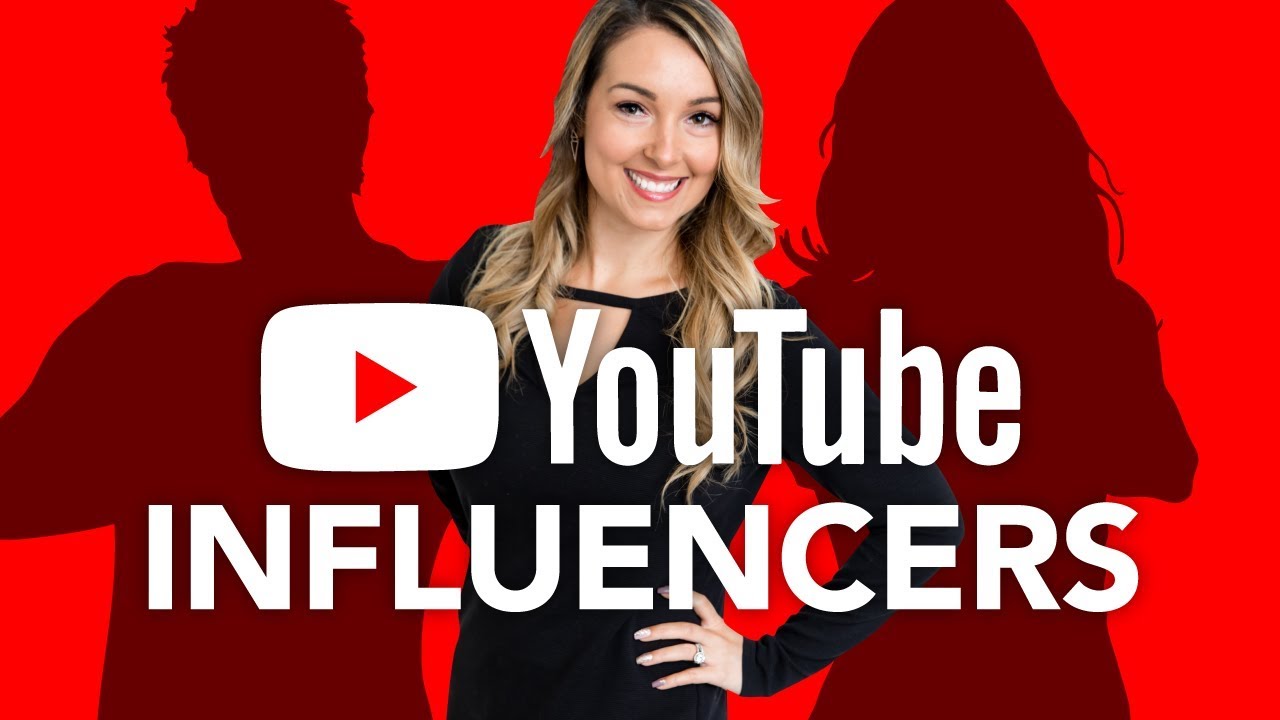Introduction
In today’s digital world, YouTube influencers play a pivotal role in shaping consumer behavior, trends, and even societal attitudes. With millions of followers, these influencers have become trusted sources for product recommendations, lifestyle inspiration, and entertainment. This article explores the impact of YouTube influencers, their rise to prominence, and how brands are leveraging their influence to reach wider audiences.
The Rise of YouTube Influencers

YouTube influencers have risen to prominence over the last decade, with many turning their hobbies and passions into full-time careers. The platform, which started as a place for personal video uploads, has evolved into a hub for creators to engage with global audiences. These influencers can range from beauty gurus, gamers, fitness experts, to lifestyle vloggers.
One of the main reasons for their success is the authentic connection they build with their audience. Unlike traditional celebrities, YouTube influencers often present themselves as relatable individuals, offering unfiltered opinions and personal experiences. This authenticity resonates deeply with viewers, leading to higher engagement and trust.
How YouTube Influencers Build Connection
YouTube influencers build a strong connection with their audience by being relatable and real. They share their everyday lives, opinions, and experiences, which makes viewers feel like they know them personally. This personal touch helps influencers gain the trust of their followers. Unlike traditional celebrities, who might feel distant, influencers appear more like friends who give honest advice.
Why Influencers Are So Popular
One reason influencers are so popular is because they make content that people can relate to. Whether it’s a makeup tutorial, a gaming review, or a day-in-the-life vlog, their content feels real and personal. People enjoy watching someone they feel connected to, and influencers often share parts of their life that make them seem just like their viewers. This connection keeps people coming back for more.
The Role of Video Content
Videos make it easier for influencers to connect with their audience. Through videos, they can show their emotions, reactions, and personal stories, which makes their content more engaging. People like to watch influencers because they feel a human connection, which is not always possible with other types of media. Video content also allows influencers to explain products, ideas, or lifestyles in more detail, helping viewers feel confident about what they’re watching.
Understanding the Influence

The influence of YouTube creators extends beyond mere numbers. These influencers have the power to shape opinions, drive trends, and even alter purchasing decisions. Their impact is rooted in the trust and authenticity they foster with their audience. When an influencer endorses a product, it often feels like a recommendation from a friend, making viewers more likely to engage with the brand.
Why People Trust Influencers
People trust YouTube influencers because they seem more like everyday people. They talk openly about their experiences, whether it’s about a new product or life advice. This honesty makes viewers feel like they are getting a true opinion rather than a paid advertisement. When influencers review or recommend something, their audience is more likely to believe it because of this trust and personal connection.
The Importance of Consistency
Successful YouTube influencers are consistent in their content. They post regularly and stay true to their personal brand. This consistency helps keep their audience engaged and coming back for more. Followers expect influencers to share new videos frequently, and if they stop, they risk losing their audience’s attention. For this reason, influencers need to stay creative and relevant to keep their viewers interested.
The Growing Role of Short-Form Content
In recent years, short-form content, like YouTube Shorts, has become more popular. Influencers use these quick videos to engage with their audience in a fast and entertaining way. Short videos are easy to watch and share, making them perfect for busy viewers. As the demand for short, snackable content grows, influencers are finding new ways to stay relevant and expand their reach.
The Influence on Consumer Behavior

YouTube influencers have a unique power to sway the purchasing decisions of their audience. Their recommendations carry significant weight because they are perceived as more credible than traditional advertisements. Viewers often see influencers as friends or trusted advisors, making them more likely to buy products or try services endorsed by their favorite creators.
According to a recent survey, 49% of consumers rely on influencer recommendations to make purchasing decisions. Brands have taken notice, investing in influencer marketing campaigns to promote products in a way that feels organic and engaging. This shift has transformed how companies market their products, moving away from traditional TV ads to digital strategies centered on influencer partnerships.
The Impact on Younger Audiences
YouTube influencers have a big impact on younger audiences, especially teenagers and young adults. Many young people look up to influencers for fashion tips, product recommendations, and even life guidance. Since influencers share their lives in a very open way, younger viewers often feel a strong bond with them. This influence can shape their preferences, habits, and even how they think about the world.
Brands Benefit from Influencers
Companies know that partnering with YouTube influencers can help them reach more people. When influencers talk about a product, it feels more natural than a traditional advertisement. Viewers trust the influencers’ opinions because they seem more genuine. For brands, this is an effective way to promote their products to the right audience, especially since influencers often target specific groups like beauty lovers or tech enthusiasts.
Why Brands Collaborate with YouTube Influencers

Brands collaborate with YouTube influencers for several reasons, including their ability to reach niche audiences, drive higher engagement, and deliver measurable results. Unlike mass advertising, which targets a broad audience, influencer marketing allows brands to reach highly targeted demographics.
For instance, a beauty brand might collaborate with a makeup artist on YouTube, while a tech company could work with a popular gamer. This specificity allows brands to tap into the interests of viewers who are more likely to convert into customers. Moreover, influencers often have deep insights into their audience’s preferences and can craft content that resonates more effectively than standard marketing messages.
Navigating the Challenges of Fame
While YouTube influencers enjoy fame and success, they also face many challenges. The pressure to keep producing content, stay authentic, and manage brand deals can be overwhelming. Many influencers experience burnout, especially when trying to balance personal life with work. Staying relevant in a highly competitive space also adds stress. Despite these challenges, many influencers find ways to manage their success and continue to grow their audience.
The Power of Authenticity and Trust

The key to an influencer’s power lies in authenticity. Audiences are drawn to influencers who appear genuine, transparent, and relatable. This level of trust is difficult to achieve with traditional celebrities or advertising campaigns. When a YouTube influencer shares personal stories or honest product reviews, they foster a deeper connection with their audience.
Trust is especially important for brands because it directly impacts consumer behavior. An influencer’s endorsement can generate buzz around a product, but it’s the trust they’ve built with their audience that leads to actual sales. Influencers who have been consistent in their messaging and honest about their experiences tend to see more success in converting their followers into customers.
Creating a Community
Another reason influencers are so powerful is that they create a sense of community. Many influencers use their platforms to engage with their followers through comments, live streams, and social media interactions. This two-way communication makes viewers feel like they’re part of a larger group, united by common interests. Brands benefit from this because when an influencer shares a product, it often sparks conversations among the community, increasing the product’s visibility.
Challenges Faced by YouTube Influencers

While the power of YouTube influencers is undeniable, they also face challenges in maintaining their authenticity and relevance. As their following grows, many influencers come under pressure to collaborate with more brands, sometimes risking the loss of trust with their audience if they endorse too many products.
Additionally, the growing competition in the influencer space makes it harder for new creators to stand out. With more people joining the platform, influencers must consistently produce high-quality content to remain relevant. They also face algorithm changes, demonetization, and potential burnout from the pressure to post regularly.
Strategies for Success

Successful YouTube influencers employ various strategies to maintain and grow their influence. Consistent content creation, audience engagement, and collaboration with other influencers are key tactics. Additionally, understanding analytics and adapting to platform changes ensures sustainable growth. Influencers often diversify their content across different formats, such as tutorials, vlogs, and reviews, to keep their audience engaged.
The Future of YouTube Influencers

The future looks bright for YouTube influencers as their role in digital marketing continues to grow. With the rise of short-form content and new monetization strategies, influencers have more opportunities than ever to expand their reach and influence.
Brands are likely to invest even more in influencer marketing as consumers increasingly favor authentic and relatable content over traditional advertisements. However, to stay relevant, influencers must continue adapting to new trends, platforms, and the evolving expectations of their audience.
Analysis Table
| Aspect | Key Findings |
|---|---|
| Rise of YouTube Influencers | Influencers have turned hobbies into careers, building authentic connections. |
| Influence on Consumer Behavior | 49% of consumers rely on influencers for product recommendations. |
| Brand Collaboration | Brands target niche audiences through specific influencers. |
| Power of Authenticity | Authenticity fosters trust and increases consumer engagement. |
| Challenges | Influencers face issues like burnout, competition, and maintaining authenticity. |
| Future of Influencers | Growth in short-form content and monetization strategies is expected. |
Comparative Table: YouTube Influencers vs. Traditional Advertising
| Criteria | YouTube Influencers | Traditional Advertising |
|---|---|---|
| Authenticity | High (perceived as genuine and relatable) | Low (often viewed as promotional) |
| Audience Engagement | Strong (direct interaction with followers) | Limited (one-way communication) |
| Targeting | Specific, niche audiences | Broad, generalized audience |
| Trust Level | High (based on personal connection) | Moderate (viewed as brand-driven) |
| Cost Effectiveness | Often more cost-effective for brands | Expensive, especially for TV or radio ads |
| Content Flexibility | Highly adaptable and diverse | Restricted by traditional formats |
Conclusion
YouTube influencers have changed the way we consume content and make purchasing decisions. Their ability to build trust, foster authentic connections, and influence consumer behavior makes them a powerful force in today’s digital landscape. Brands that recognize the power of YouTube influencers and collaborate strategically will continue to see success in reaching their target audiences.




